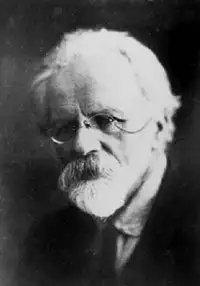In scientific history, certain experiments stand out for their audacity and ethical ambiguity. One such experiment unfolded in the early 20th century when Soviet scientist Ilya Ivanovich Ivanov embarked on a daring quest to create a hybrid species, famously dubbed the “Human-Ape Hybrid.” It was a controversial experiment that sought to merge human and ape traits. In this article, learn what was the Human-Ape Hybrid Experiment, and explore the motivations, methods, and lasting impact of Ivanov’s scientific odyssey.
Contents
What was the Human-Ape Hybrid Experiment?
The Human-Ape Hybrid Experiment was a controversial, unethical, and questionable scientific experiment by Soviet biologist Ilya Ivanovich Ivanov in the early 20th century. It was Ivanov’s ambitious goal to create a hybrid species by combining human and ape traits, envisioning a workforce that would be more resilient and capable of doing work than human force. The experiments involved artificially inseminating female chimpanzees with human sperm and, conversely, attempting to inseminate human volunteers with ape sperm, and this was the most questionable attempt.
Who was Ilya Ivanovich Ivanov?
Ilya Ivanov, a prominent biologist and artificial insemination pioneer, was driven by a vision to revolutionize the workforce. His fascination with creating a hybrid species stemmed from a belief that blending human and ape characteristics could yield a more resilient and capable labor force, addressing the industrial challenges faced by the Soviet Union in the early 20th century.
Ivanov’s Motives
Ivanov’s motives were rooted in the societal challenges faced by the Soviet Union at the time, particularly in the realm of industrial productivity. He believed that by blending human and ape characteristics, he could create a superior workforce capable of withstanding the physical demands of labor and society.
However, the Human-Ape Hybrid Experiment faced widespread criticism from both the scientific community and the public. Ethical concerns were raised about the treatment of the animals involved in the experiments and the potential creation of beings with ambiguous moral and legal status. Additionally, the scientific feasibility of Ivanov’s ambitious venture was widely questioned, leading to skepticism within the scientific community.
In the end, Ivanov’s experiments were largely unsuccessful, and the Human-Ape Hybrid never came to reality. The project left behind a legacy of controversy and criticism, serving as a cautionary tale in the history of scientific exploration.
Ambitious Experimental Methods
Ivanov’s experimental methods were as audacious as his vision. In the 1920s, he initiated a series of attempts to artificially inseminate female chimpanzees with human sperm. Simultaneously, he explored the reverse approach by attempting to inseminate human volunteers with ape sperm. The intricacies of these experiments, coupled with the prevailing scientific knowledge of the time, laid the groundwork for a controversial journey into uncharted territory.
Ethical Concerns and Scientific Skepticism
The Human-Ape Hybrid project encountered vehement opposition from both the scientific community and the public. Ethical concerns loomed large, focusing on the treatment of the animals involved and the potential creation of beings with ambiguous moral and legal status. Scientific skeptics questioned the feasibility of Ivanov’s ambitious venture, challenging the ethical norms that had long governed scientific research.
Ivanov’s Unsuccessful Pursuit
Despite the ambitious efforts, Ivanov’s experiments were largely unsuccessful. The Human-Ape Hybrid never materialized, leaving behind a legacy of controversy and criticism. The scientist faced both professional setbacks and personal challenges as his pursuits veered away from the established ethical norms in scientific research.
Conclusion
The Human-Ape Hybrid experiment led by Ilya Ivanovich Ivanov remains a stark reminder of the ethical responsibilities accompanying the quest for knowledge and innovation. While ambition in the scientific realm is commendable.
Ivanov’s Human-Ape Hybrid experiment remains etched in history as a cautionary tale. The audacious pursuit of blending human and ape traits may have been driven by a desire to address societal challenges. Still, it ultimately fell victim to ethical scrutiny and scientific skepticism. As we reflect on this experiment, it serves as a poignant reminder that pursuing knowledge must always be tempered by a profound sense of responsibility and a commitment to ethical principles. The Human-Ape Hybrid, though relegated to the annals of failed experiments, leaves behind important lessons for the scientific community and society to learn.
If you liked this article share it and also Read:
- Candy Jones
- Piltdown Man Mystery: Missing Link Between Humans and Apes or Fraud
- Operation Brainwash: Story of a Psychiatrist and His Unethical Medical Experiments
Sources
- Launer, John. “Monkey business.” Postgraduate Medical Journal 91.1072 (2015): 117-118.
- Diamandopoulos, A. A., and C. P. Goudas. “Human and ape: the legend, the history, and the DNA.” Hippokratia 11.2 (2007): 92.
- E. P. Fridman; D. M. Bowden (January 2009). “The Russian Primate Research Center – A Survivor”. Laboratory Primate Newsletter, Volume 48, Number 1.
- Rossiianov, K (2002). “Beyond species: Il’ya Ivanov and his experiments on cross-breeding humans and anthropoid apes”. Science in Context. 15 (2): 277–316. DOI:10.1017/S0269889702000455. PMID 12467272. S2CID 41098906.
FACT CHECK: We strive for accuracy and fairness. But if you see something that doesn’t look right, please Contact us.
DISCLOSURE: This Article may contain affiliate links and Sponsored ads, to know more please read our Privacy Policy.
Stay Updated: Follow our WhatsApp Channel and Telegram Channel.
